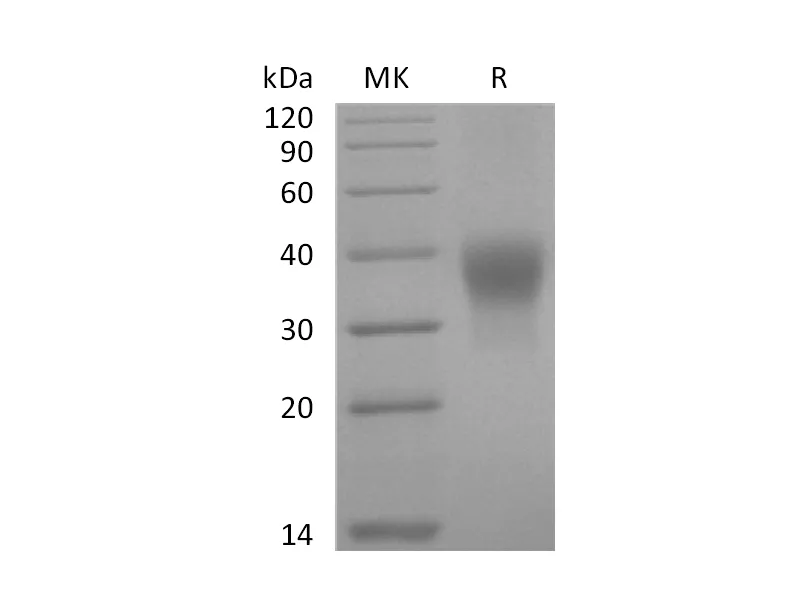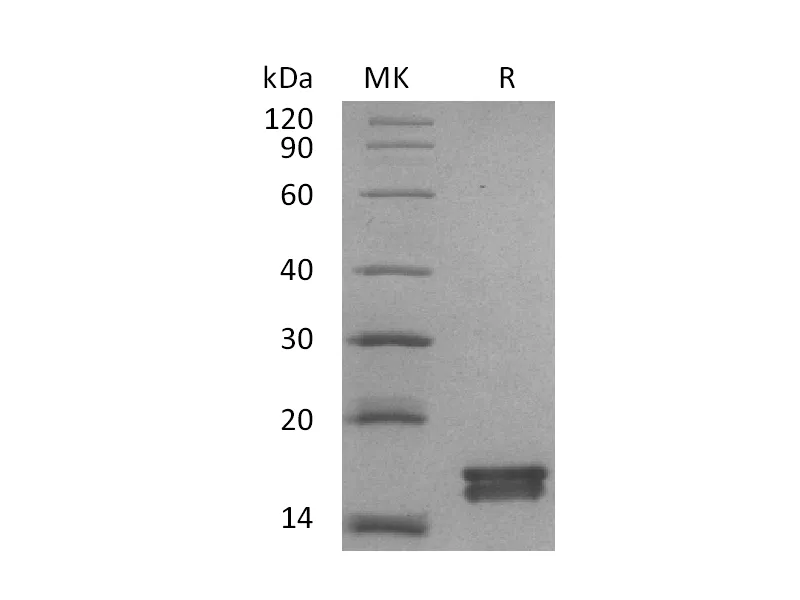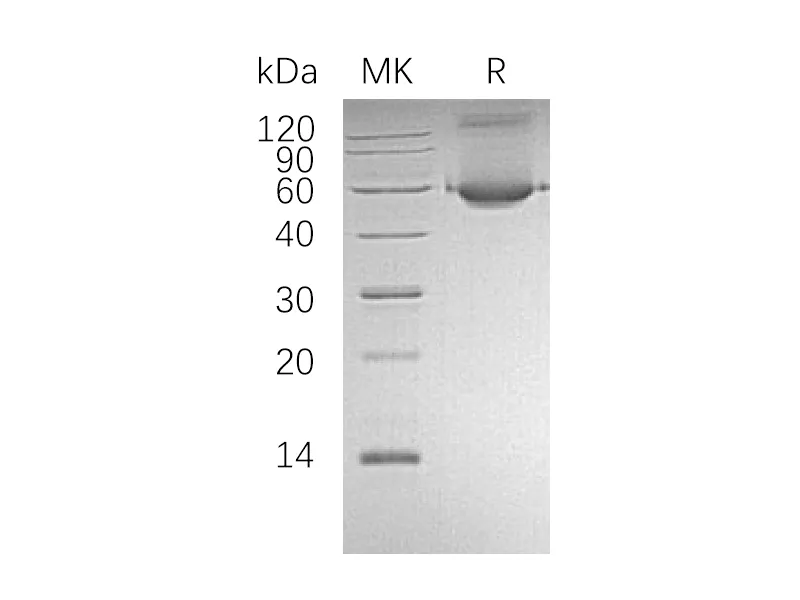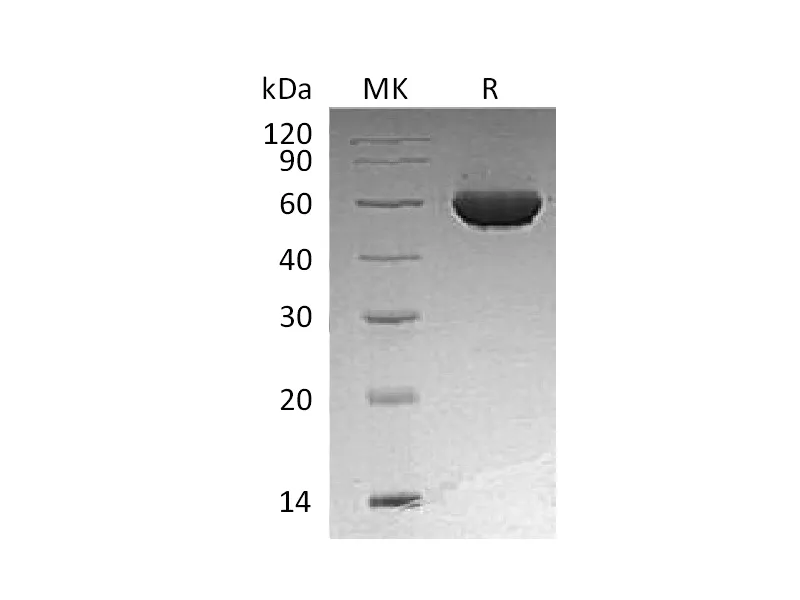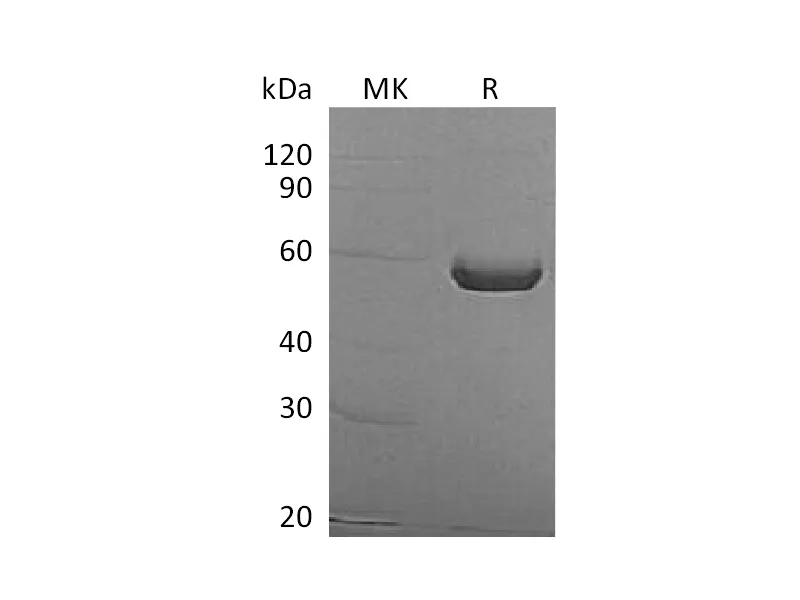| Name | Recombinant Human PD-1 (C-6His) |
| Purity | Greater than 95% as determined by reducing SDS-PAGE |
| Endotoxin level | <1 EU/µg as determined by LAL test. |
| Construction | Recombinant Human Programmed Cell Death Protein 1 is produced by our Mammalian expression system and the target gene encoding Pro21-Gln167 is expressed with a 6His tag at the C-terminus. |
| Accession # | Q15116 |
| Host | Human Cells |
| Species | Human |
| Predicted Molecular Mass | 17 KDa |
| Buffer | Lyophilized from a 0.2 μm filtered solution of 20mM Tris-HCl, 10% Trehalose, 100mM NaCl, 0.05% Tween 80, pH 7.5. |
| Form | Lyophilized |
| Shipping | The product is shipped at ambient temperature.Upon receipt, store it immediately at the temperature listed below. |
| Stability&Storage | Store at ≤-70°C, stable for 6 months after receipt.Store at ≤-70°C, stable for 3 months under sterile conditions after opening. Please minimize freeze-thaw cycles. |
| Reconstitution | Always centrifuge tubes before opening.Do not mix by vortex or pipetting.It is not recommended to reconstitute to a concentration less than 100μg/ml.Dissolve the lyophilized protein in distilled water.Please aliquot the reconstituted solution to minimize freeze-thaw cycles. |
Alternative Names
Programmed cell death protein 1; hPD-1; PDCD1; CD279
Background
Programmed cell death protein 1(PDCD1) is a single-pass type I membrane protein and contains 1 Ig-like V-type domain. PD-1 is a member of the extended CD28/CTLA-4 family of T cell regulators. PDCD1 inhibits the T-cell proliferation and production of related cytokines including IL-1, IL-4, IL-10 and IFN-γ by suppressing the activation and transduction of PI3K/AKT pathway. In addition, coligation of PDCD1 inhibits BCR-mediating signal by dephosphorylating key signal transducer. PDCD1 has been suggested to be involved in lymphocyte clonal selection and peripheral tolerance, and thus contributes to the prevention of autoimmune diseases. As a cell surface molecule, PDCD1 regulates the adaptive immune response. Engagement of PD-1 by its ligands PD-L1 or PD-L2 transduces a signal that inhibits T-cell proliferation, cytokine production, and cytolytic function.
Note
For Research Use Only , Not for Diagnostic Use.

